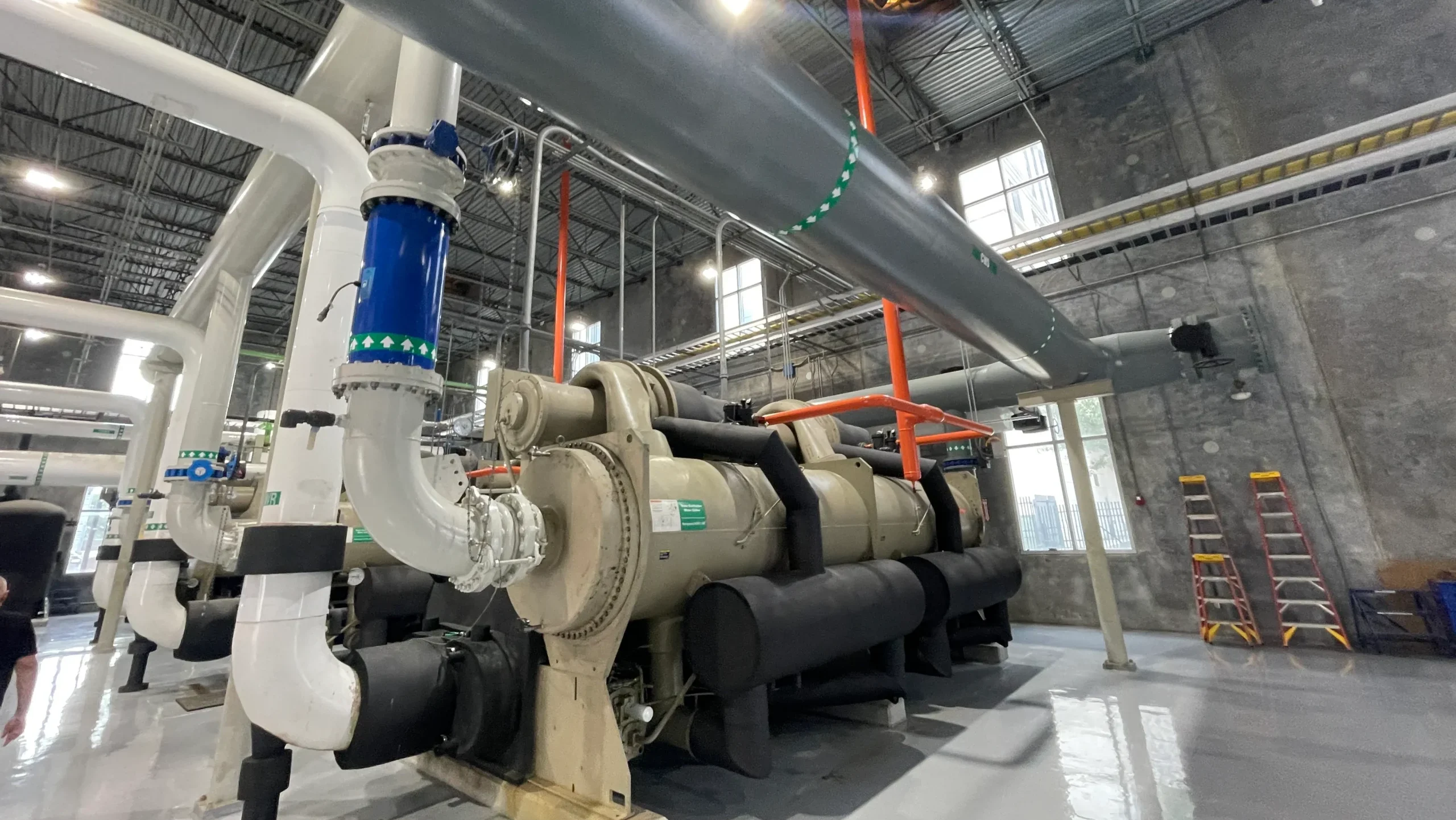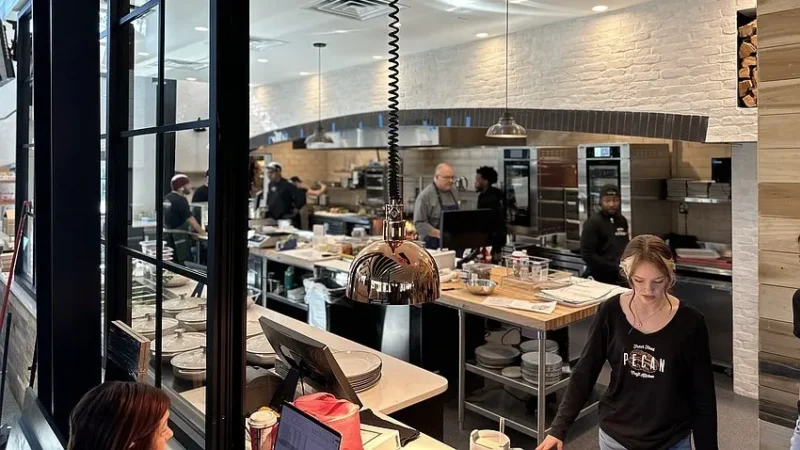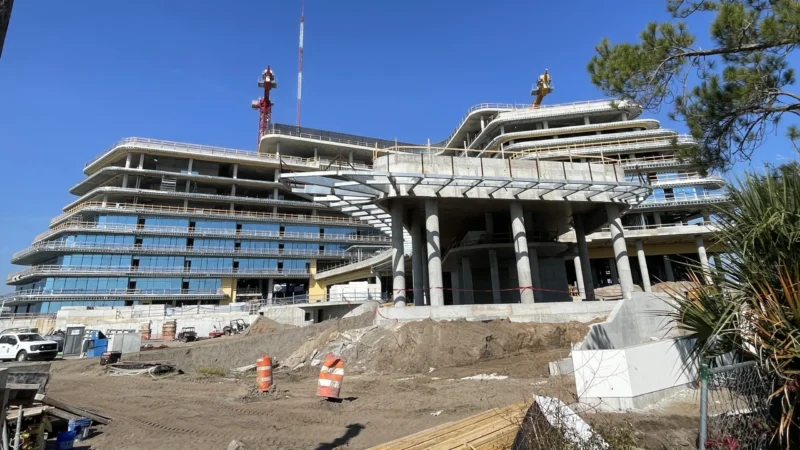Jaguars fans who walk into the fully renovated Everbank Stadium in three years will feel a new chill in the air.
JEA, the city and Jax Stadium LLC, a development company controlled by Jacksonville Jaguars owner Shad Khan, have finalized an agreement that will pump in chilled water from the Hogan’s Creek District Energy System plant to cool the complex.
The Jacksonville City Council unanimously approved legislation Tuesday finalizing the deal. That decision comes just a few months after JEA crews completed chilled water connections to Khan’s Four Seasons hotel and office building under construction across the street from the stadium.
“It frees up a lot of space within the stadium where they don’t have to have their own chillers. Because right now there are huge sections of that stadium that you can’t see with cooling towers and chillers that provide the cooling,” Daniel Weaver, the city-owned utility ‘s District Energy operations manager, said. “So, in the future, we’re going to do it.”
During a tour of JEA’s Downtown chilled water plant in July, Weaver told Jacksonville Today that the new demand in the Sports and Entertainment District could signal faster growth for the JEA service that today services a handful of large commercial and government customers.
“This expansion and the future possibilities for expansion — we have to temper it with funding — but are enormous,” Weaver said. “This system could expand and be one of the bigger systems in the nation when it comes to cooling systems if we can get the funding in place and get our business plan set up just right. We’re working toward that end goal.”

How chilled water works
JEA’s chilled water business had its genesis in 2003-2004 as part of the Better Jacksonville Plan. The utility has three plants that house giant chillers, compressors and cooling towers that provide an alternative to onsite air conditioners and chillers to some of Downtown’s large commercial office buildings, hospitals and entertainment venues.
JEA Hogan’s Creek Plant was the first to come online to power what’s now the VyStar Veterans Memorial Arena and VyStar Ballpark. The Springfield plant exclusively cools the buildings on the University of Florida Health Jacksonville Campus.
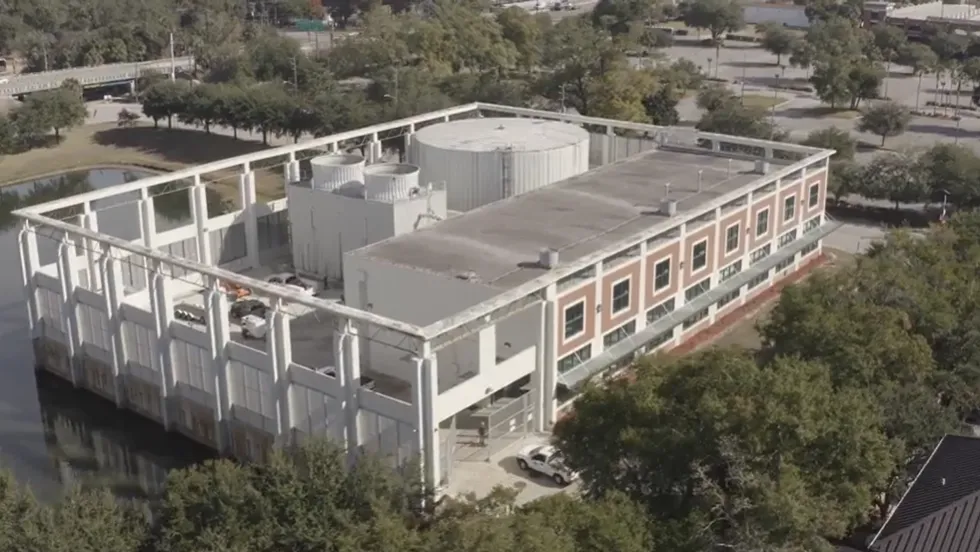
The biggest demand for the Downtown plant comes from the Duval County Courthouse.
The system works by chilling water to 39 degrees and pumping it out through underground piping to its commercial customers. The water picks up the heat from the building and brings it back to the plant at 52 degrees where refrigerant and cooling towers dissipate it.
“It’s kind of like your air conditioner at home, but only on a huge scale,” JEA Foreman Craig Mehler said. “They all work on the same principle where you have your little air handler in your closet or in your garage. … It’s taking the heat out of your house, bringing it out to your outside unit. The outside unit has to coil with the fan, and that’s where the heat goes.”
According to JEA, the chillers and cooling towers for what’s officially referred to as its District Energy System are more energy efficient and have a lighter carbon footprint than smaller systems typically instilled in high-rises and commercial buildings.
Weaver says contracting the off-site service also saves building owners maintenance costs..
JEA meters the service by the ton. According to a JEA service map, the Downtown plant’s current capacity is 7,200 tons of chilled water. That’s small in comparison to other U.S. plants. For example, TECO’s South Main Plant that provides chilled water to the Texas Medical Center in Houston has a 120,170-ton capacity.
JEA’s system runs on electricity, but Weaver says during peak times, they can take pressure off the grid by using excess chilled water kept in large tanks called “thermal batteries” and continue to feed the system.
Money is one hurdle for expansion, but Weaver says there are other logistical issues that JEA workers have to get around that make expanding chilled water in Jacksonville a time-consuming process.
All the pipes run underground. When the stadium is eventually turned on, it will take 3,100 tons of chilled water to cool. Weaver says JEA crews will tap into the connection that services the Miller Electric Center where the Jaguars train
“Everything here is hidden underground, which is fantastic for the visualization but in reality it’s a nightmare to dig in the 100-year-old city, because there’s so much stuff buried down here,” he said. “Every time you started digging, you hit something else and the pipe had to be shifted and moved, and moved. So one of the biggest challenges for getting district energy in an older city is the infrastructure buried underground. You have to get around it, and the cost to do that is significant and the impact of traffic, and things like that.”
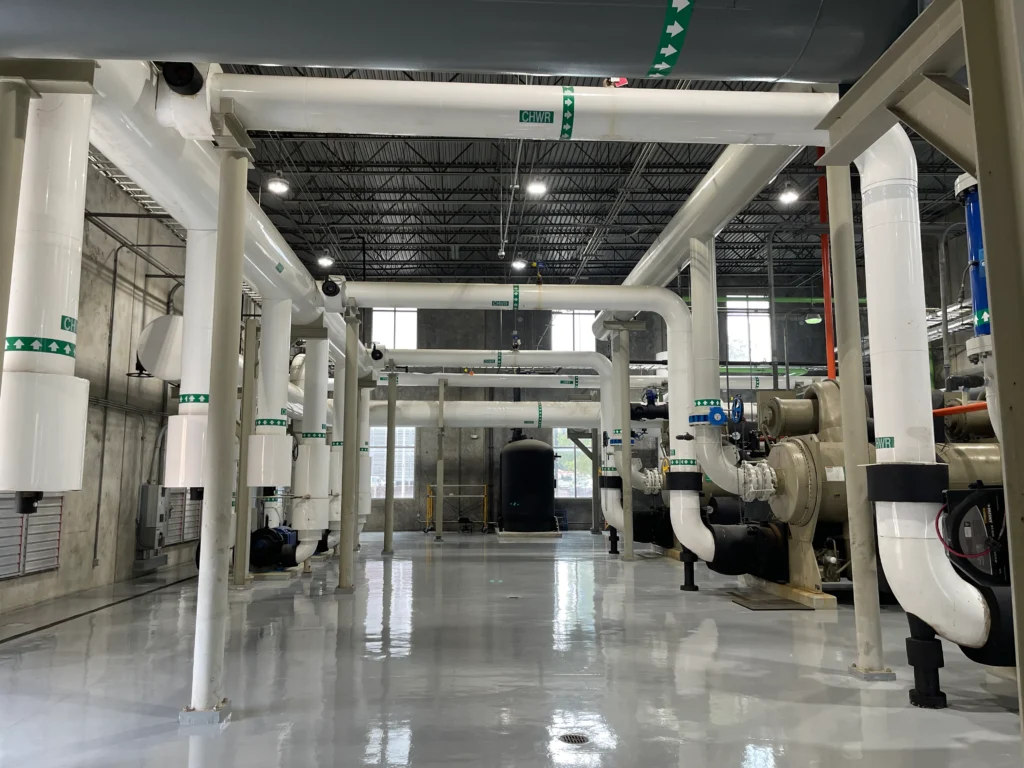
Growth by the numbers
JEA’s commercial cooling business is one of the public utility’s smallest lines of businesses. In the 2025 fiscal year, the chilled water system had a $13.19 million operating budget and planned an $18 million budget for capital improvements and upgrades, according to JEA budget documents presented in June.
Compare that to JEA’s electric business, which cost $1.42 billion to operate and had a $307 million capital budget.
But the stadium and Four Season expansion, continuing talks with more Downtown property owners and an aggressive growth plan has JEA preparing for a spike in demand in the coming years.
Utility officials plan to double its investment in the District Energy System in 2026 to $37.6 million, followed by a forecasted $36.3 million in capital projects in fiscal year 2027. All three of the plants have room to expand, with the Duval Street location maintaining space to double.
Posted on a cork board in the office at the Downtown chilled water plant, a property map dotted with red shows more than 30 sites JEA is targeting, and in some cases in talks with the owners, about using the utility’s cooling service instead of installing their own on-site chillers.
That also includes sites under development on the Southbank. That would resurrect plans to offer the service south of the St. Johns River that Weaver says stalled years ago when talks to supply Baptist Medical Center with chilled water stopped.
Weaver says those plans could also take the system beyond what’s shown on the current map into other areas of the city.
“This system can expand significantly outside of the Downtown core to where we can have other districts in Jacksonville,” he said. “All of that’s being considered in the business plan (and) is being developed for the future growth of the system.”
According to Weaver, the Orlando Utilities Commission has the largest chilled water service in Florida. But he hopes JEA’s could eventually have comparable scale.



